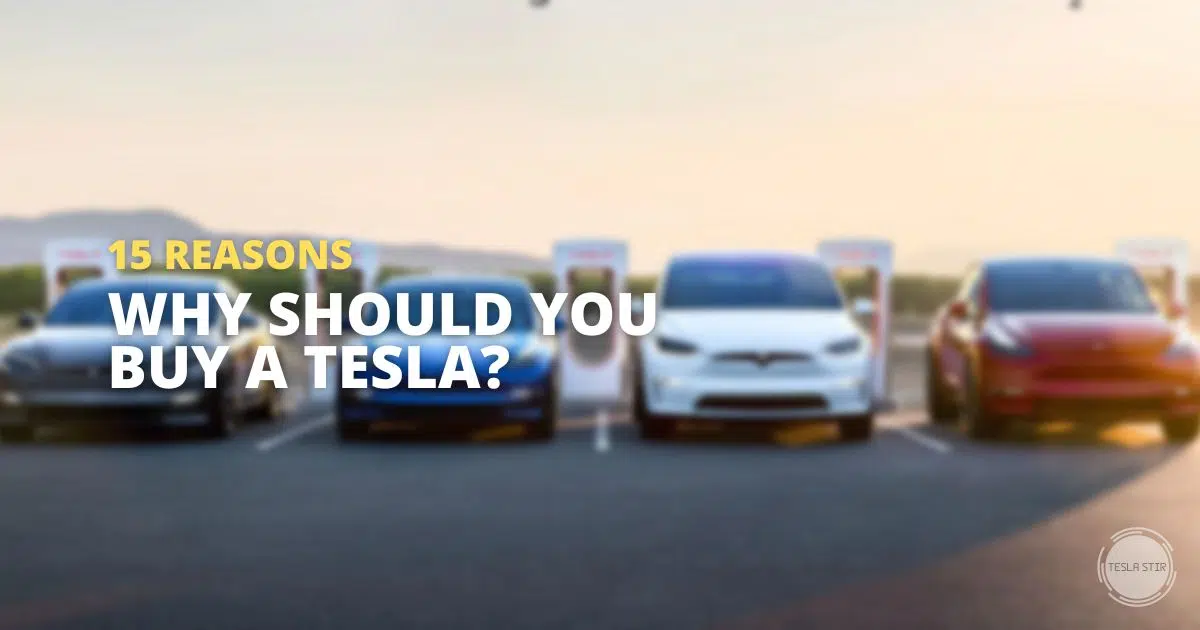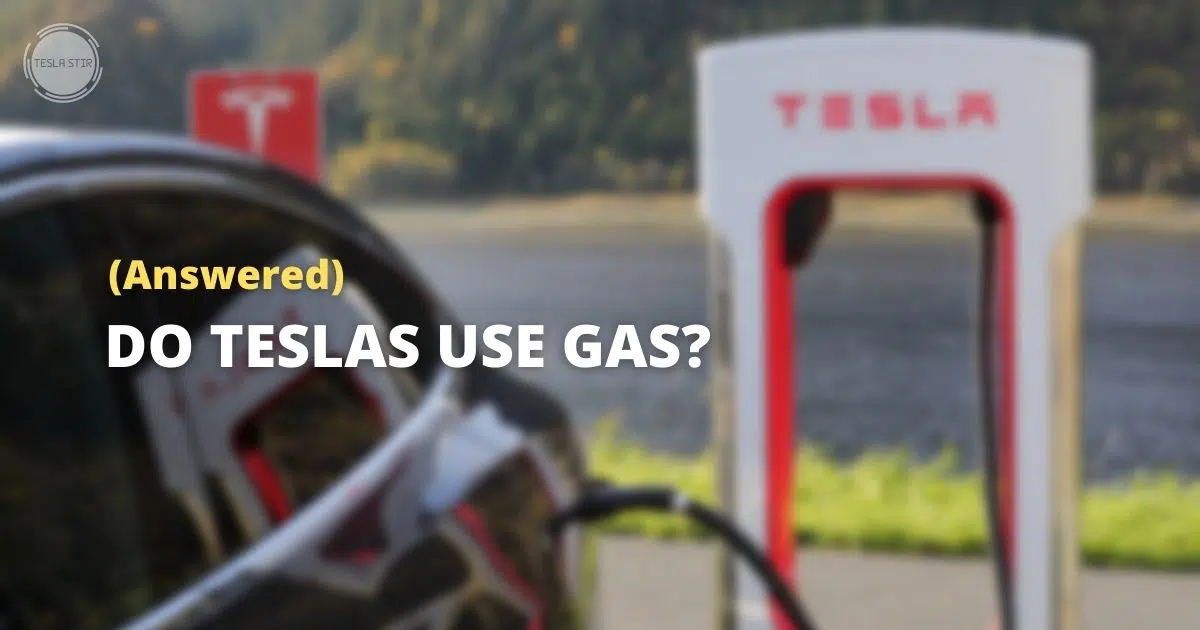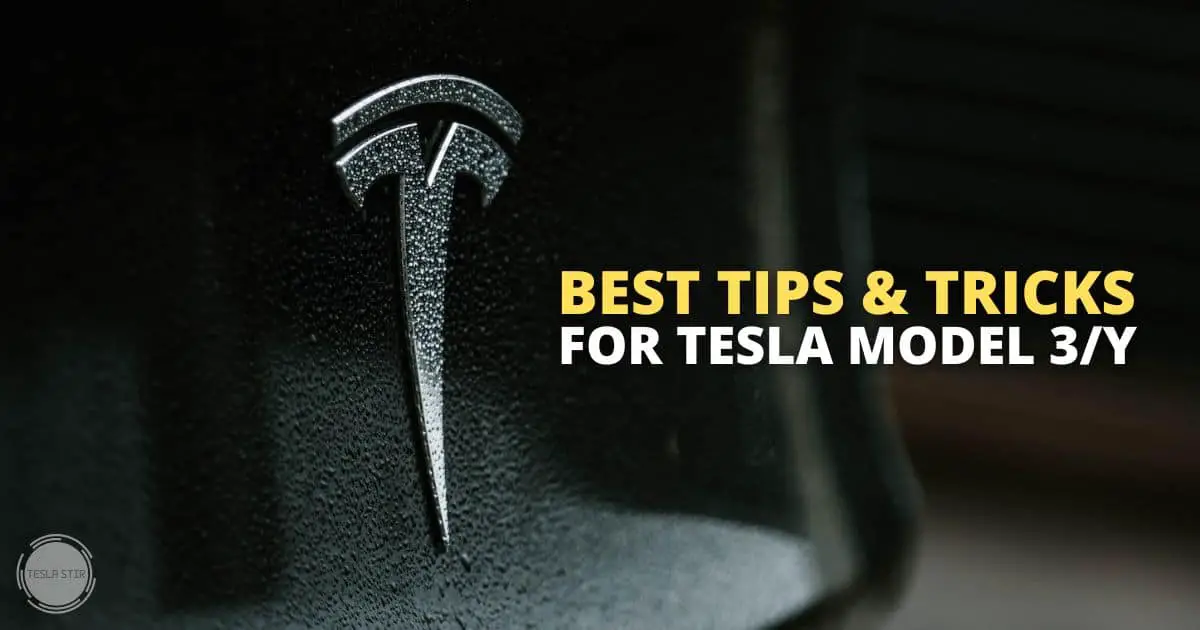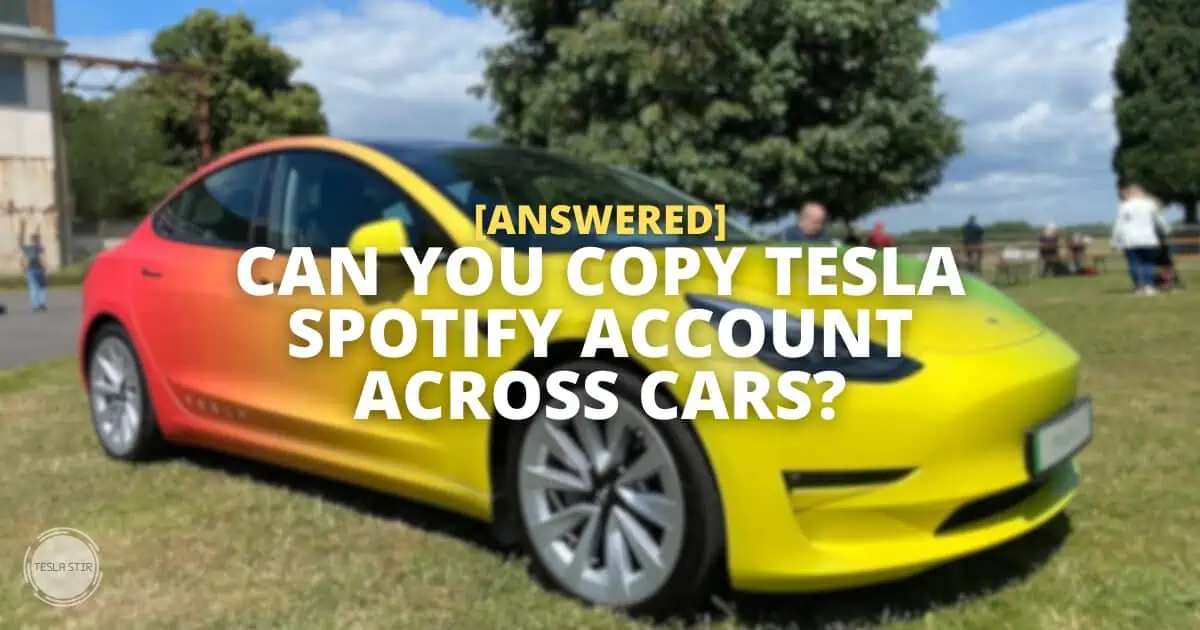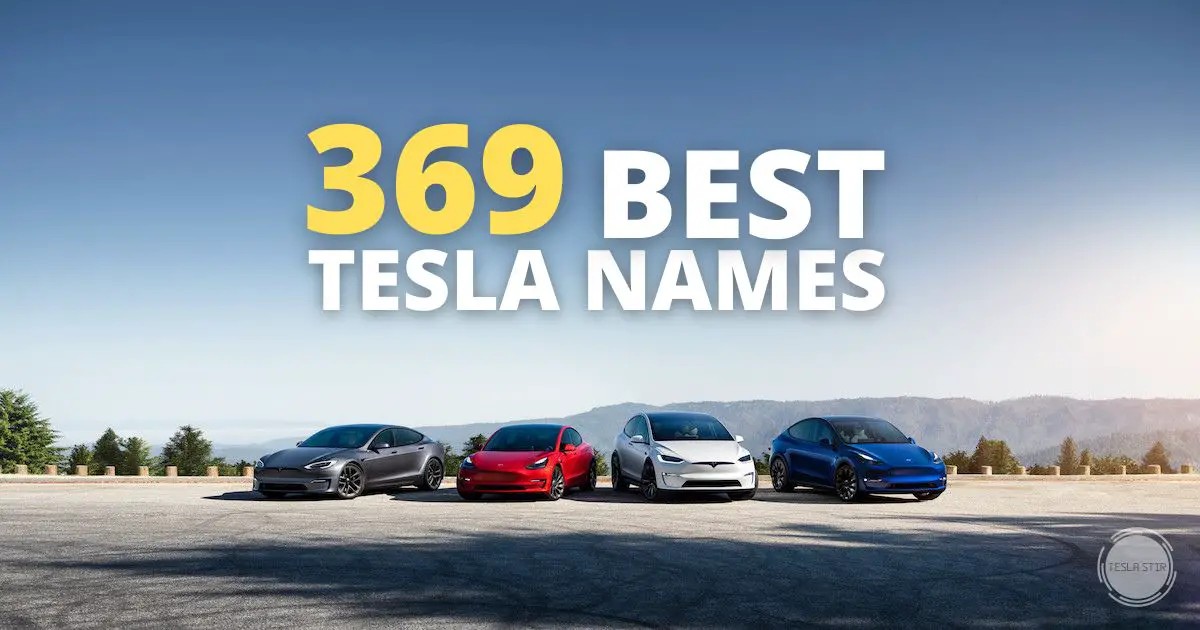Can You Drive a Tesla in the Rain? The Not-So-Surprising Answer!
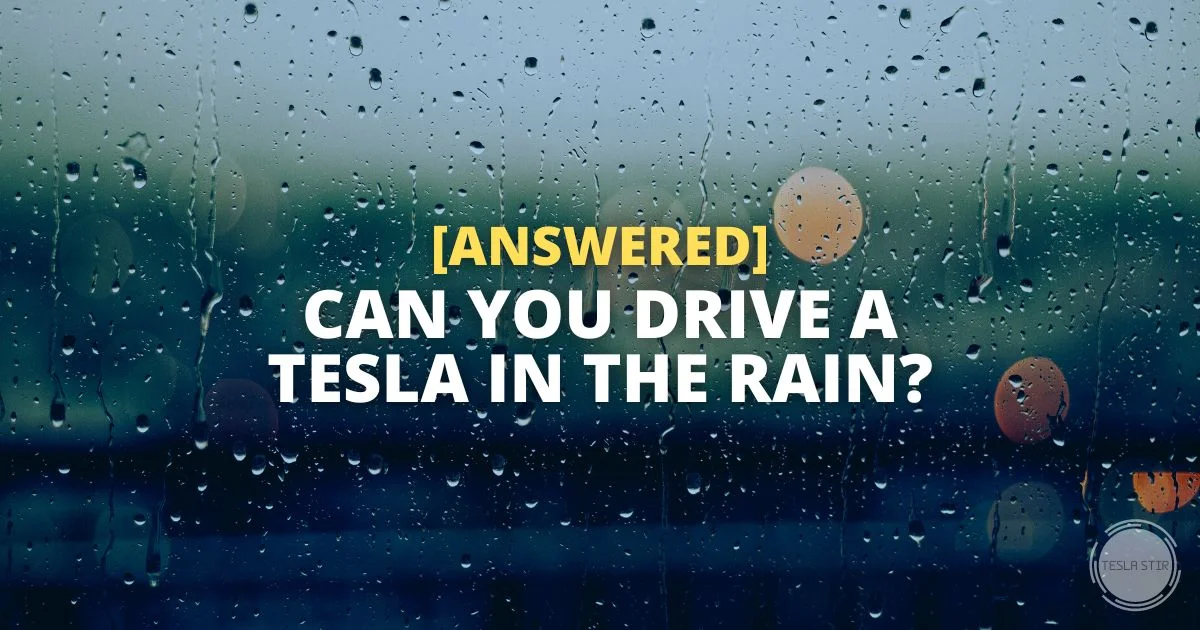
Stepping on the pedal on a rainy day and wondering if it's possible to cruise the roads in your Tesla during a downpour?
Don't fret!
Even if the weather isn't cooperating, I have some good news: you can definitely drive a Tesla in the rain – it is perfectly safe!
In fact, Teslas are designed to operate on wet roads like any other vehicle, if not better!
You have various safety features like ESC, Traction Control, Automatic Emergency Braking, and Autopilot that work together to provide active assistance and make driving in the rain a safer experience.
So you don't have to let a little bit of rain stop you from planning your next road trip in your Tesla!
In this article, we'll explore the features that contribute to a Tesla's safety in wet conditions and offer useful tips for navigating slippery roads.
Can You Drive a Tesla in the Rain?
Yes, absolutely. Tesla electric vehicles are built to withstand any climate, including rain. Driver-assistance features such as Electronic Stability Control, Traction Control, Automatic Emergency Braking and Autopilot, make it easier and safer to drive in wet conditions.
Tesla's design also helps with their performance and handling in wet weather conditions.
For example, Teslas have a low centre of gravity that gives them exceptional grip and road-handling capabilities. The main reason for this is the powerful, high-voltage battery mounted in the bottom of the car.
The battery's placement also helps with the overall structural rigidity of the car compared to an ICE vehicle where most of the weight is concentrated in the front (where the engine sits).
Now, you might think because the battery pack is in the base of the car, it makes the electrical parts prone to water damage. The truth is: the battery system is fully sealed and waterproof to ensure no liquid can infiltrate your Tesla's vital components.
Unquestionably, you don't have to stress over any potential damages from moisture penetrating into the high-voltage battery or drivetrain of your vehicle.
So, you can splash through a water stream or puddle without fear of damaging anything or being electrocuted! Still, be mindful; you may not realise the depth of the water and hidden rocks or debris at the bottom that could potentially cause damage to your car or tires.
Are Teslas Safe in the Rain?
Yes, Teslas are totally safe in the rain to drive, park or charge up; they are designed to operate in various weather conditions, including rain.
I have owned my Tesla Model 3 LR for over three years now and can vouch for its dependability in all types of weather. From snowfall to flash flooding, torrential rain or sunshine… this car is reliable through thick and thin!
As with any vehicle, it is essential to be extra vigilant when driving in wet weather. The roads may be slippery and visibility may be reduced. It's always best to reduce speed and take various precautions. Stick around as I have covered a few of them later in the post.
How Does a Tesla Drive in Heavy Rain?
In heavy rain, Teslas are still able to drive safely with good handling and control. The low centre of gravity keeps the car firmly planted on the ground even on wet roads and sharp turns. The battery system and electrical components are fully waterproof, which means that the vital components are protected in situations of severe downpours.
Plus, the Autopilot feature can be of huge assistance in wet weather. Autopilot along with adaptive cruise control and lane assist, keeps you centred and steady in your lane even when visibility is low, as well as automatically engages brakes if it senses any potential danger.
When the weather is too rough, Navigate on Autopilot automatically will inform you and will limit its features (like automatic lane change), still keeping adaptive cruise control active that maintains a steady speed and keeps you in-lane. I'll discuss more on Autopilot and how I take advantage of its capabilities in a bit.
Do Tesla windows roll up when it rains?
No, Tesla windows don't roll up automatically when it detects rain. At least, not yet.
It can, however, already detect when it's raining (that's how it activates the windshield wipers in auto mode – they're not the best though!). You know if you know!
So, chances are it could be coming in a new software update sometime in the future.
Here's Elon Musk's tweet acknowledging the request.
I have also reached out to him on Twitter, but he has yet to reply. Go and retweet; maybe then he will answer or even take the suggestion into consideration for a future update! It could prove to be an incredibly useful feature.
If you own a Tesla, you might have questions about charging your vehicle in wet weather conditions. Let's address that here as well!
Can You Charge a Tesla in the Rain?
The short answer is yes, you can charge a Tesla in the rain. Tesla vehicles are designed to be charged in any weather condition; snow, rain or shine.
However, it is always recommended to exercise caution and take certain steps before plugging in your electric vehicle.
It's important to use a properly rated and grounded outdoor electrical outlet or charging station, and to avoid charging your Tesla in standing water or during a lightning storm.
If you want to learn more, check out my article on charging a Tesla in the rain. It also outlines the precautions you should take to ensure your safety and the safety of your Tesla while charging in wet conditions.
What Features Make Teslas Safe to Drive in the Rain?
Let's look at the individual safety features Teslas come with and how each of these works in severe weather conditions.
1. Autopilot
One of the most crucial Tesla features is its Autopilot system, which utilizes a network of onboard cameras to provide Traffic-Aware Cruise Control, Autosteer, Auto Lane Change, and Navigate on Autopilot. These features are essential for keeping you safe when visibility is low, especially during heavy rain.
To learn more about Tesla's advanced camera system, read my in-depth guide on how many cameras a Tesla has.

2. Electronic Stability Control (ESC)
Electronic Stability Control (ESC) system helps keep the car stable while driving in dangerous conditions such as wet roads.
It works by monitoring the car's speed, steering input and direction of travel to detect any skidding. If the vehicle begins to slide, ESC automatically applies brakes and reduces power to bring it back under control. ESC can help prevent a driver from losing control of their car on wet or slippery roads.
This post on TMC explains: ESC is a complex 6-axis model of the movement of your car which tracks all your car's motions with an accelerometer and gyroscope and monitors for oversteer, understeer, left-right traction imbalance and so on.
3. Traction Control
Traction control is another active safety feature that helps reduce wheel spin and improve grip when driving in wet and slippery conditions. It works by monitoring the speed of each wheel and when it detects wheel spin, it reduces power to the wheel to keep traction.
4. Anti-lock Braking System (ABS)
The anti-lock braking system (ABS) prevents wheel lock in most road conditions and allows for better steering control on slippery roads. When you need to brake in emergency situations, the ABS automatically modulates brake pressure to help keep the car in control according to the available grip.
5. Lane-Assist and Lane Departure Avoidance
Lane assist provides steering interventions to help you stay in your lane, while Lane Departure Avoidance is designed to provide an alert or even apply corrective steering before the car begins to drift out, or nears the edge of a lane. You can access this setting at Controls > Autopilot > Lane Departure Avoidance.
These two features together provide added peace of mind when driving in heavy rain.
7 Tips When Driving in the Rain with a Tesla
Here I have got some tips for you to keep in mind while driving your Tesla in wet weather:
Use Autopilot Features
The Autopilot system is equipped with high-tech sensors and cameras that can detect obstacles, road conditions and other cars on the road. Sometimes, even better at this task than humans, in my experience!
Don't be surprised when on a foggy day, Tesla sees an oncoming vehicle and slows down before you even notice it.
Believe it or not, I feel more comfortable and safe using Autopilot when it's raining to stay in the lane and keep a safe distance from the vehicles in the front than driving manually.
Now, it's not that I am not paying attention to the road or relying completely on Autopilot. I still keep my hands on the wheel and a close eye on the instrument panel to ensure that Autopilot is doing its job, I just find it easier and more convenient with Autopilot On.
But, I'm always ready to take over if needed – that's applicable to all situations, wet or dry!
Remember: Be mindful of your surroundings and adjust manually when needed. Autopilot is still in beta so it's not perfect. Use it to facilitate your driving but don’t rely on it entirely for safety. Always remain prepared to take control if necessary!
Windshield wipers
Make sure your windshield wipers are in working order. You don't want them to fail during a downpour, as that could severely hamper your visibility and cause an accident.
Traction decreases on wet roads
Be aware of decreased traction on wet roads and make sure to slow down if necessary, especially when making turns or going downhill.
Check Tyres Regularly
Regularly check your tires to make sure they are inflated correctly and that the treads are in good condition. Tires with correct air pressure and adequate tread depth provide better traction on wet roads so make sure to check them frequently.
Reduce your speed
In severe weather, it's always best to slow down and maintain a safe following distance. Wet roads can be slick, and stopping distances are longer in the rain.
Use your headlights and turn signals
Visibility can be reduced in heavy rain, so make sure other drivers can see you. On that note, make sure all your lights (front and rear) and turn signals are functioning properly.
Large puddles
Be careful of large puddles and standing water, as they can cause damage to your car's electrical system if you drive through them at high speeds.
Wrapping Up
With that, I trust this blog post has provided an adequate response to the inquiry – Is it possible to drive a Tesla in wet conditions?
As you can see, driving a Tesla in the rain is no different than driving any other car – just use common sense and take extra caution when necessary.
Teslas are designed with safety features that allow them to be driven safely in all types of weather conditions including heavy rain. However, it is important to take extra caution when driving in such conditions and always keep an eye out for potential hazards on the road.
If you find this article helpful, please share it with your friends and family. As always, stay safe and drive responsibly! Thanks for reading!


